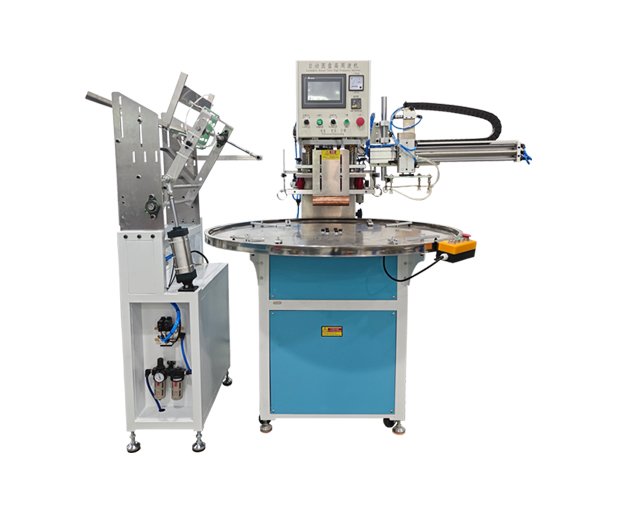Time:2025-08-19 Views:1 source:News

The temperature range of an embossing machine is a critical operational parameter that directly influences the quality, durability, and consistency of embossed products. Embossing machines use heat and pressure to create raised or recessed patterns on materials such as paper, plastic, leather, fabric, and metal—with temperature controlling how the material softens, conforms to the embossing die, and retains the pattern after cooling. Different materials require distinct temperature ranges to achieve optimal results, as excessive heat can damage the material (e.g., burning paper, melting plastic) while insufficient heat leads to faint, incomplete patterns that peel or fade over time.
For paper and cardboard embossing (common in packaging, greeting cards, and book covers), the typical temperature range is 80°C to 150°C (176°F to 302°F). Thin papers (e.g., 80-120 gsm) require lower temperatures (80°C-110°C) to avoid scorching or warping, while thicker cardstocks (200-400 gsm) or coated papers (e.g., matte or glossy finishes) need higher temperatures (120°C-150°C) to ensure the pattern adheres to the denser material. For example, embossing a luxury greeting card with a foil-stamped pattern uses 130°C-140°C to melt the foil adhesive and press the design into the cardstock, creating a crisp, metallic raised effect without damaging the paper’s surface.
Plastic embossing (used in packaging films, ID cards, and consumer goods) operates at a higher temperature range of 120°C to 220°C (248°F to 428°F), depending on the plastic type. Thermoplastics like polyethylene (PE) and polypropylene (PP) soften at 120°C-160°C, making them suitable for low-temperature embossing, while rigid plastics such as polyvinyl chloride (PVC) and acrylonitrile butadiene styrene (ABS) require 180°C-220°C to become malleable enough to take the embossing die’s shape. For instance, embossing a PVC ID card uses 190°C-200°C to create a raised holographic pattern that resists wear, as lower temperatures would result in a pattern that rubs off easily.
Leather and fabric embossing (for fashion accessories, furniture upholstery, and automotive interiors) demands precise temperature control to preserve the material’s texture and strength. Natural leather (e.g., cowhide, sheepskin) embosses best at 60°C to 120°C (140°F to 248°F), with full-grain leather requiring lower temperatures (60°C-90°C) to avoid drying out the natural oils that keep it supple. Synthetic leathers (e.g., PU leather) and fabrics (e.g., cotton, polyester blends) need slightly higher temperatures (90°C-120°C) to ensure the pattern penetrates the material’s fibers without causing shrinkage or discoloration. For example, embossing a PU leather handbag uses 100°C-110°C to create a textured crocodile or snake pattern that maintains flexibility, unlike higher temperatures which would make the leather brittle.
Metal embossing (used in signage, decorative panels, and industrial parts) operates at the highest temperature range: 200°C to 400°C (392°F to 752°F). Metals like aluminum, brass, and steel require extreme heat to soften sufficiently for the embossing die to press into the surface, with aluminum (200°C-280°C) being more heat-sensitive than steel (320°C-400°C). For example, embossing a steel decorative panel for a building facade uses 350°C-380°C to create deep, durable raised patterns that withstand outdoor weathering, as lower temperatures would only scratch the metal rather than form a permanent emboss.
Modern embossing machines feature digital temperature control systems with precision thermostats (±1°C accuracy) and heat sensors embedded in the embossing platen (the heated surface that presses against the die). These systems allow operators to program and maintain specific temperatures for different materials, with automatic shutoff features to prevent overheating. Additionally, some machines include zone heating—independent temperature control for different sections of the platen—enabling multi-pattern embossing on a single material (e.g., combining a low-temperature paper pattern with a high-temperature foil stamp on the same card).
Quality control for embossing machine temperature involves regular calibration using thermal imaging cameras or temperature probes to verify that the platen’s temperature matches the set value. Operators also conduct test runs on sample materials before full production, adjusting the temperature incrementally (5°C-10°C at a time) to achieve the desired pattern depth and material integrity. By adhering to material-specific temperature ranges, embossing machines produce consistent, high-quality products that meet industry standards for durability and aesthetics.
Read recommendations:
Manual high frequency roundtable rotary table welding machine plastic blister paper card welder
Button making punching machine
RF cutting machine.Precautions for ultrasonic embossing machine
Complete control over products allows us to ensure our customers receive the best qualityprices and service. We take great pride in everything that we do in our factory.
